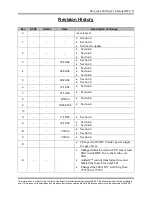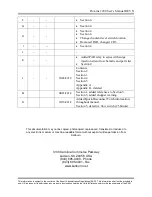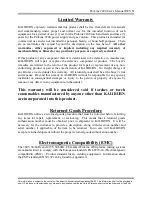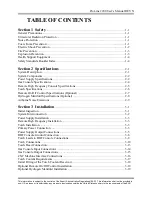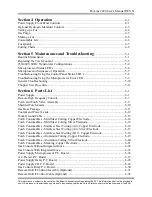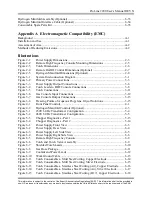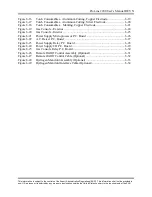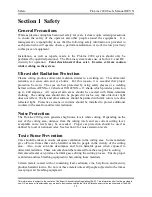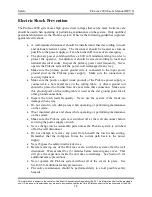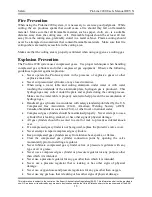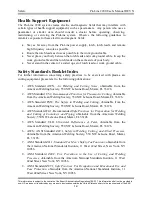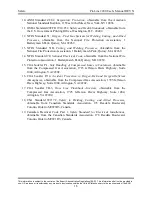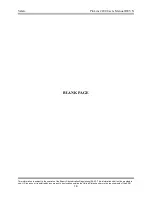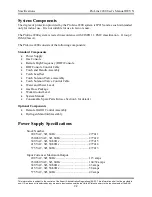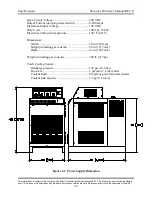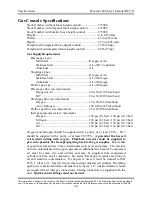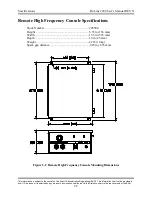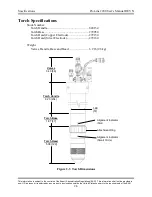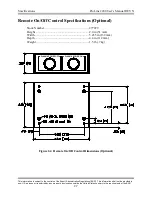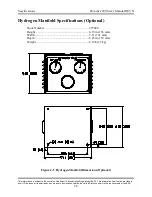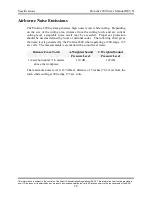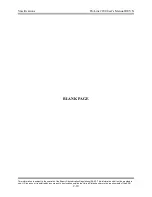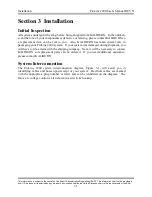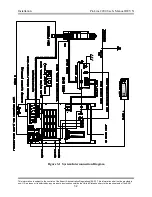
Safety
ProLine 2200 User’s Manual REV N
This information is subject to the controls of the Export Administration Regulations [EAR]. This information shall not be provided to
non-U.S. persons or transferred by any means to any location outside the United States contrary to the requirements of the EAR.
1-3
Fire Prevention
When using the ProLine 2200 system, it is necessary to exercise good judgment. While
cutting, the arc produces sparks that could cause a fire should they fall on flammable
material. Make sure that all flammable material, such as paper, cloth, etc., is a suitable
distance away from the cutting area. All flammable liquids should be at least 40 feet
away from the cutting area, preferably stored in a metal cabinet. Plasma cutting should
never be attempted on containers that contain flammable materials. Make sure that fire
extinguishers are readily accessible in the cutting area.
Make sure that the cutting area is properly ventilated when using oxygen as a cutting gas.
Explosion Prevention
The ProLine 2200 system uses compressed gases. Use proper techniques when handling
compressed gas cylinders and other compressed gas equipment. Observe the following
guidelines to protect against explosion:
•
Never operate the ProLine system in the presence of explosive gases or other
explosive materials.
•
Never cut pressurized cylinders or any closed container.
•
When using a water table and cutting aluminum under water or with water
touching the underside of the aluminum plate, hydrogen gas is produced. This
hydrogen gas may collect under the plate and explode during the cutting process.
Make sure the water table is properly aerated to help prevent the accumulation of
hydrogen gas.
•
Handle all gas cylinders in accordance with safety standards published by the U.S.
Compressed Gas Association (CGA), American Welding Society (AWS),
Canadian Standards Association (CSA), or other local or national codes.
•
Compressed gas cylinders should be maintained properly. Never attempt to use a
cylinder that is leaking, cracked, or has other signs of physical damage.
•
All gas cylinders should be secured to a wall or rack to prevent accidental knock
over.
•
If a compressed gas cylinder is not being used, replace the protective valve cover.
•
Never attempt to repair compressed gas cylinders.
•
Keep compressed gas cylinders away from intense heat, sparks, or flames.
•
Clear the compressed gas cylinder connection point by opening the valve
momentarily prior to installing a regulator.
•
Never lubricate compressed gas cylinder valves or pressure regulators with any
type of oil or grease.
•
Never use a compressed gas cylinder or pressure regulator for any purpose other
than which it is intended.
•
Never use a pressure regulator for any gas other than which it is intended.
•
Never use a pressure regulator that is leaking or has other signs of physical
damage.
•
Never use oxygen hoses and pressure regulators for any gas other than oxygen.
•
Never use any gas hose that is leaking or has other signs of physical damage.


